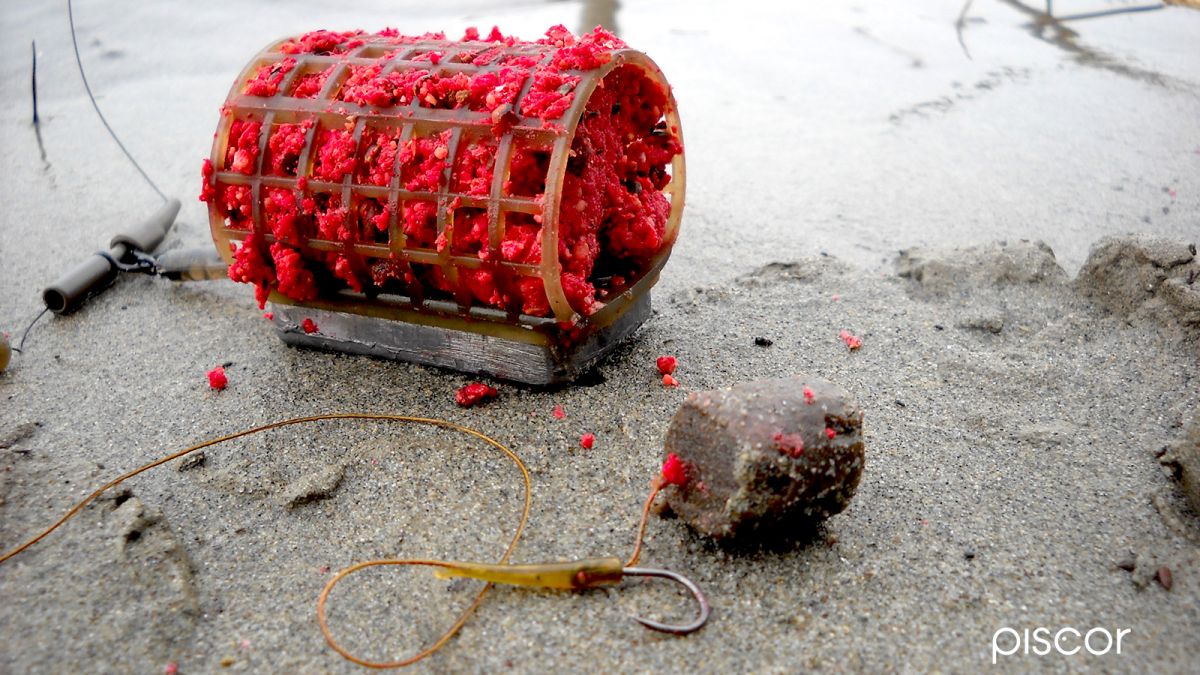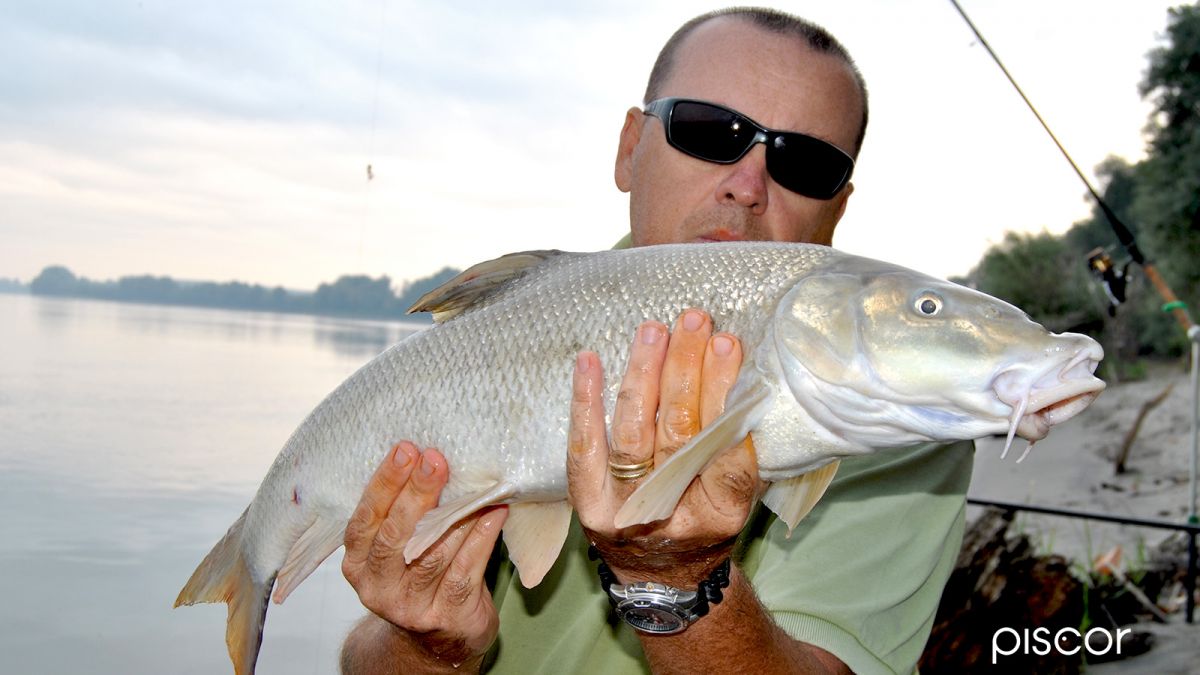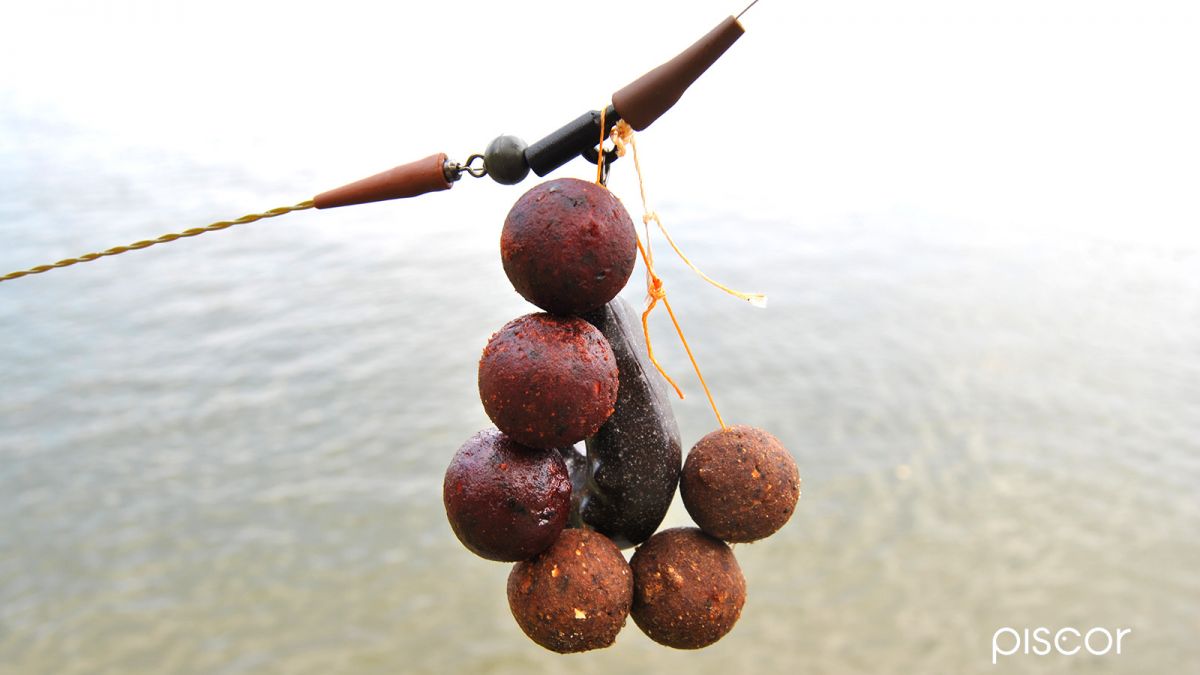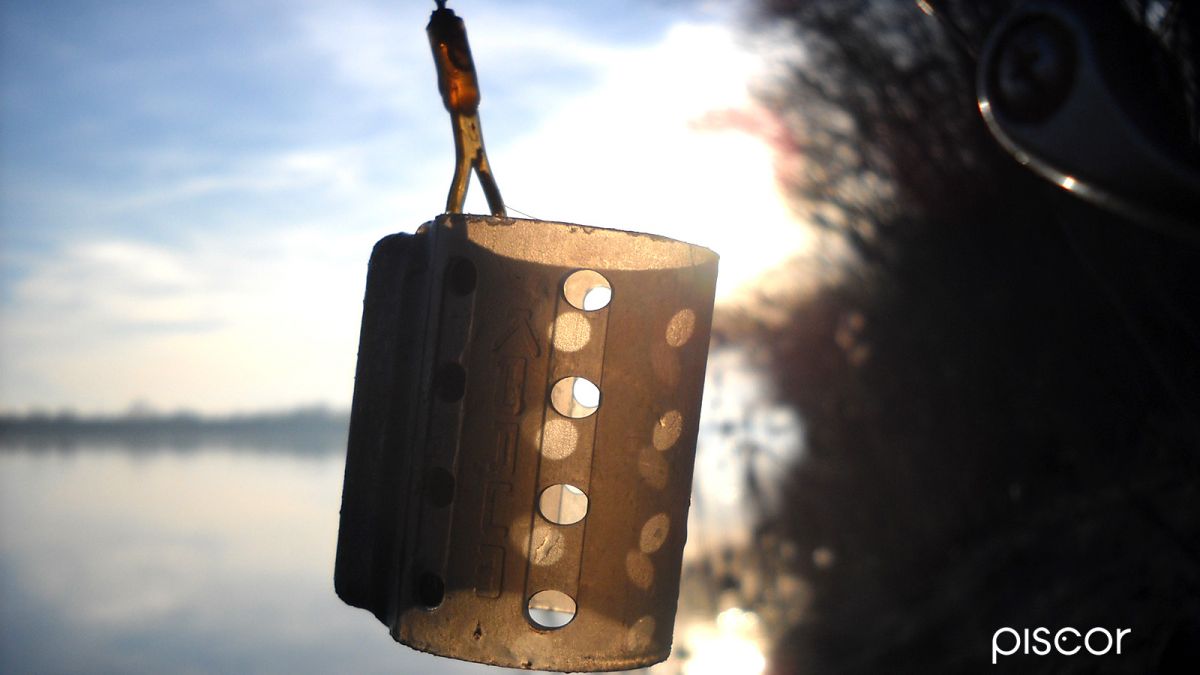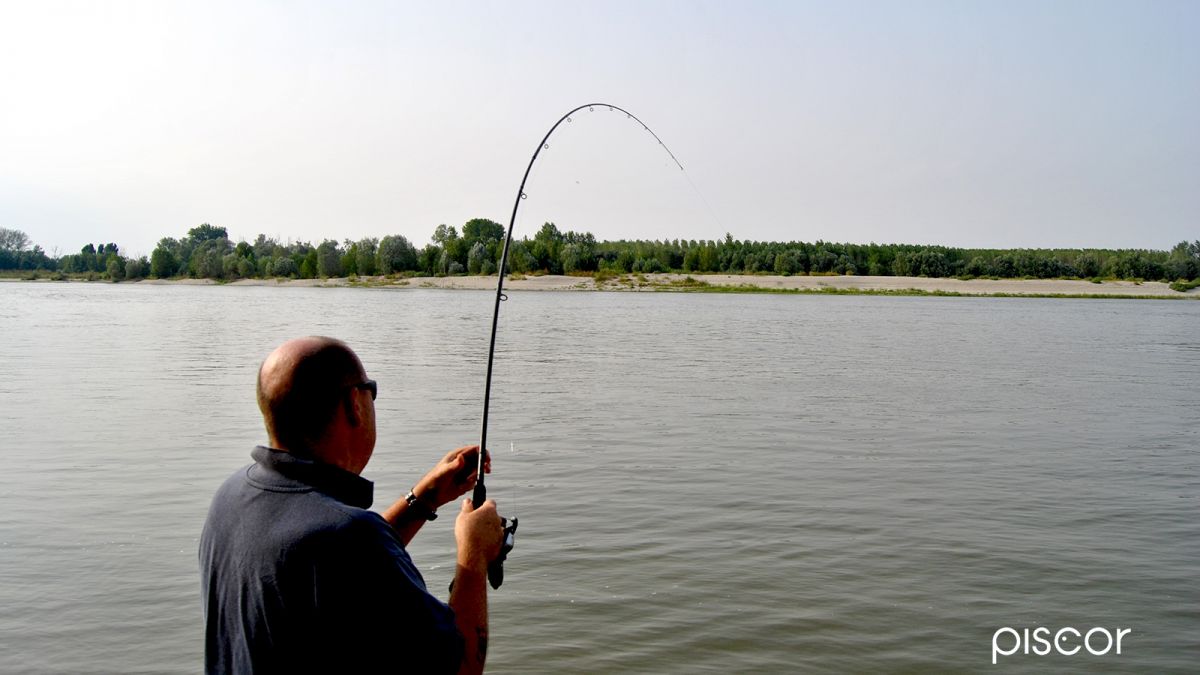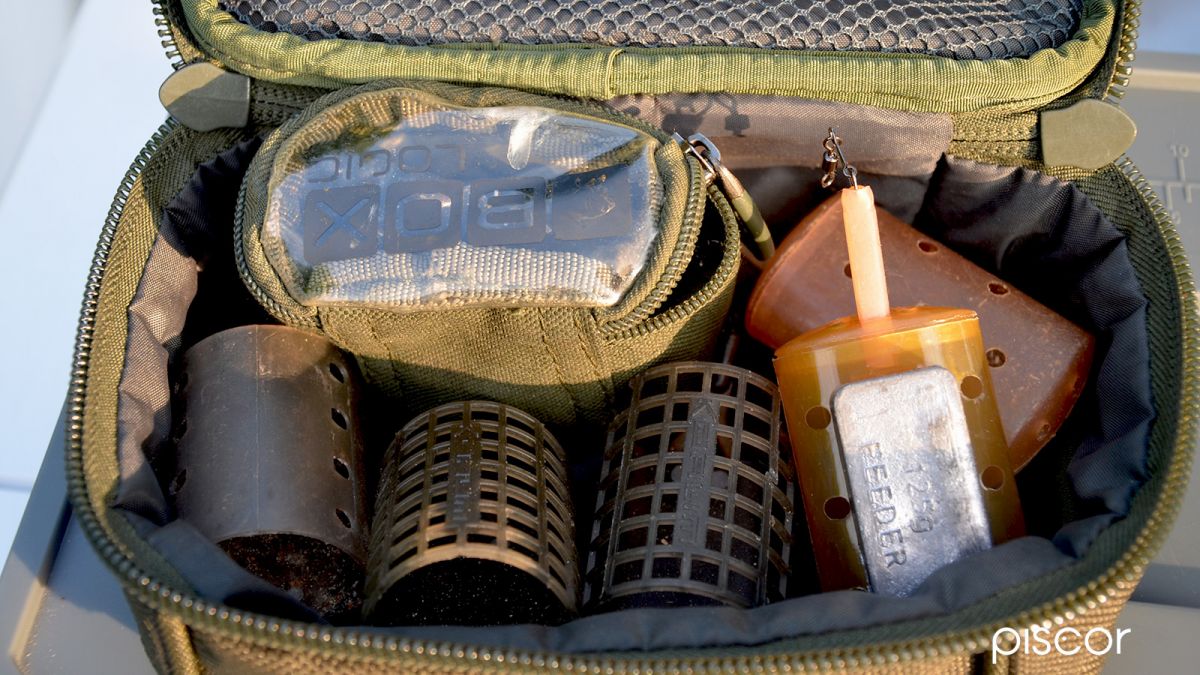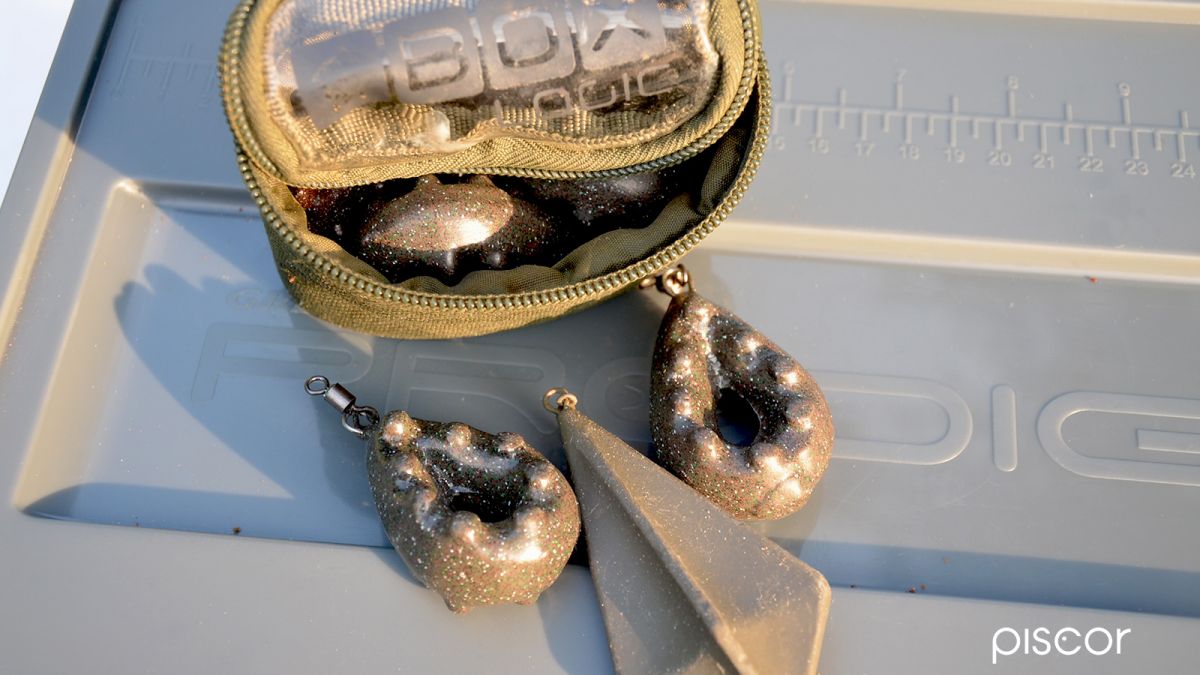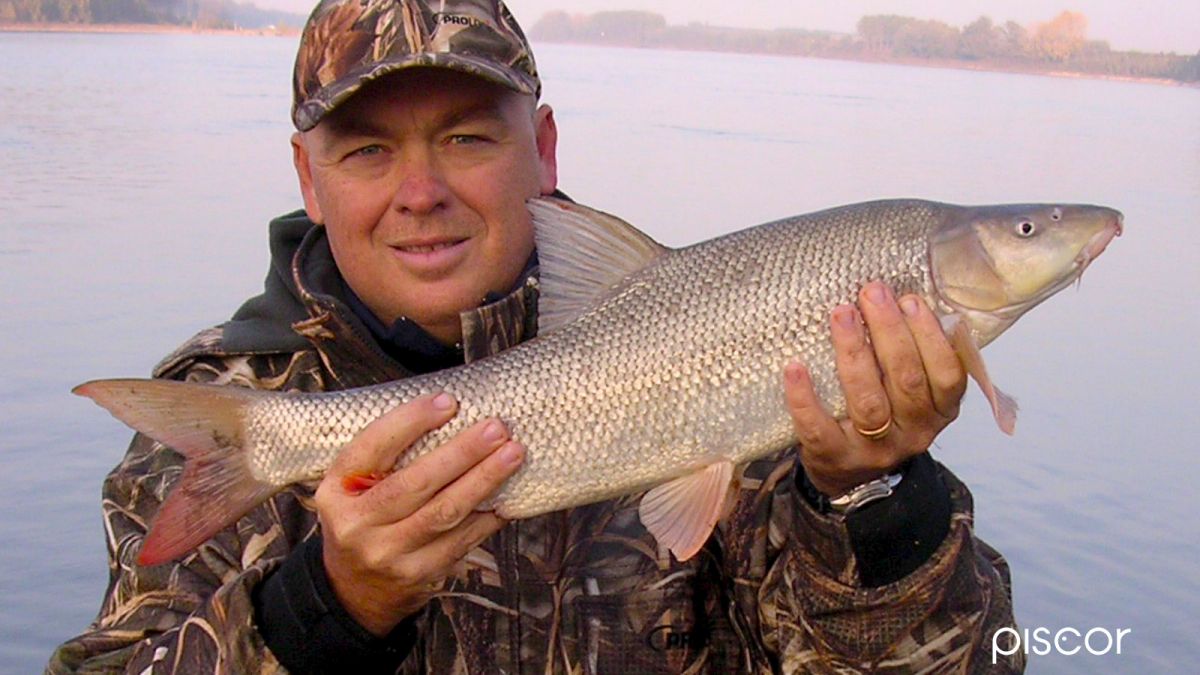Feeder technique is the best method available to the angler to direct the session towards a positive result, on the contrary, making mistakes in terms of time and methods can become useless or, even worst, counterproductive. How do you feed in a typical spot of a large river? By preparing three fishing rods on a 20-metre bank, with a current that requires 150 grams of ballast and with a depth that varies from 6 to 8 metres, we are facing a mass of water in the order of hundreds of cubic metres.
The feeders release, at each cast, about 50 g of product. It was easy to make the proportions. It is difficult to conditionate a spot because of many factors: from the time it takes to go to the river, to the costs of the quantities of baits needed, ending with the weather that can, with a simple thunderstorm to nullify weeks of work.
What's the solution to not just count on good luck? Easy! A productive fishing session must pass through a careful and meticulous study of the spot trying to identify those that, for morphological and/or environmental reasons, constitute points of the river where the fish is used to transit, eat or simply to stop.
THE HOT SPOTS
Whether you prefer preventive pasturation or the only recall action during the session, the knowledge of the river becomes fundamental. Identifying an area where fish passes and finds nourishment can be the difference between a failure or a memorable catch.
Determining these "hot spots" is not difficult. In the section of river that I often see, the bed is remarkably wide and the beach is just downstream of a prominent point of stones. When the level of the river leaves this protuberance uncovered, the main current is diverted, to the bank creating a large flow of water, and then gradually take back strength and speed downstream, all on an important seabed with a current that requires heavy ballast.
To find similar locations you don't need boat or fishfinder, just take advantage of the technology, through satellite images available on the Internet and learn to observe, on site, the maps for river navigation that indicate holes and shoals. You then need to arm yourself with patience and explore the beaches using a simple lead.
Counting the seconds it takes for the lead to reach the bottom and noting how much line it is necessary to bring it back to the surface are useful both to understand the depth and to map any obstacles on the bottom. In any case, it is essential to visit the river regularly, love and respect it, "understanding" it becomes a natural consequence.
STRINGER & C
The action of the feeder is not the only way to ensure a minimum of feeder and the consequent action of attraction. We have already talked about how difficult it is to plan long preventive feeder sessions, because of the colour and level of rivers with large flows, outside the summer period, over long phases without rainfall.
When the current and the spot allow it, we can choose the classic stringer with 7/8 pellets threaded like a " rosario ". We pay great attention to how we ensure the stringer at low line, depth and current can dissolve the PVA and disperse its contents before the hook is on the bottom, also, if we tie the stringer to the hook, we risk unbalancing the long terminal with the risk of twisting that could make the rig ineffective. It is enough to pack the stringer closed in a double eyelet in a sort of small crown, then we assure everything to the safety clip that holds the lead, the current will place the pellets correctly.
Obviously, we are talking about placing the bait immediately under the shore, without casting it too long or in full current. Restricted and well-defined areas are essential so that feeder can some opportunity to keep in the area the fish that comes into the spot to eat. Similarly, we can rely on the classic PVA bags or nets that we will fill with coarse pieces of pellets, boilies and other attractors.
THE FEEDER
As mentioned above, previously feeding sections of large rivers is a costly and dangerous operation, time consuming and expensive. A preventive feeding, set on at least ten days before the session, can be cancelled by some storms.
So,the feeding operation, with what it involves in terms of costs and time, only makes sense if you are sure you have a good weather for a long period, which is quite difficult in today's season. Fishing with pellets is not static and the use of the feeder further helps this job. In the flours that I use as a reminder I usually add some 3 or 4 mm micro pellets and I usually enrich with cheese flour, chrysalis flour or crushed hemp,preferably red in colour. If you have problems to get an open end feeder, you can modify a normal block end, removing the top cap and opening the bottom following the line of holes below. Simple and effective without changing the hydromechanical characteristics of the feeder.
QUICK FEEDER
Another valid alternative or support is that of supplying an additional quantity of pellets compared to that dispensed by feeders or stringers. Knowing the spot helps a lto, and that this strategy can produce some result. A first phase, just before going into fishing, with a light catapult feeding based on the same pellets that we will hook, followed and repeated a couple of times at regular intervals during the session. When carrying out the operation, we consider the speed of the current, the size of the pellets and the depth of the water. One last advice, preparing multiple rods in fishing, leave the feeder only on the upstream one , while prepare the other two with a simple lead, this is to prevent the feeding phase to last too long.
LOCATION SETTING
Let's spend a few words on how the fishing rod should be placed, starting from the idea that the less wire the current pushes, the less lead you will need to stay inactive. Several factors contribute to this: the angle of the rod on the rod holder, the casting angle and the "belly" of the nylon. The rod must point upwards, as high as the river determines it.
Under standard conditions, such as full current, regular ground and constant depth, an angle of about 45° to the river is enough. The height above the ground also contributes to this, the higher you are, due to the effect of a rod rest or a rod pod , the less angle you need.
Another angle to consider is the casting angle, to avoid having the wire that, due to the current, is "hanged" downstream, the point of impact of the ballast must be less than half of the angle formed by the pole and the profile of the bank.
Finally, the "belly": when the ballast reaches the bottom we leave at least one wire rod in competition, positioning itself in water and forming an arch, again due to the effect of the current, will attenuate the pressure of the same on the ballast. If you do things right when the ballast is still, it must be in front of the rod holder with the Avon tip, which does not show any excessive bends or vibrations.
What is useful, for several reasons, is to place the rods on the bank at about 10/12 meters from each other, if you have three rods in fishing your seat will be in front of the rod upstream, so as to keep an eye on the whole range of rods without turning your head continuously and to be close to the one you will have to load most frequently being the only one equipped with feeders.
Three rods in fishing means more chances to get the fish, it means to explore different ways, it means to provide a feeder with the rod upstream. The distance of the rod holders on the shore is chosen to avoid on the one hand to travel kilometers to change periodically the baits and on the other hand not to have to get nervous about the central rod tangling the one downstream.
CASTING TECHNIQUE
If you were to fish in a large river for the first time, it would be normal for you to feel a slight discomfort. Discomfort in having to fish in a spot that offers few points of reference and where width, depth and current contribute to increase a certain loss.
In this context, the casting technique, assumes vital importance in the economy of the session, lay the bait and its source of feeder always in the same area is crucial. To optimize the cast and position of the feeder let's put ourselves in front of the river, with the current traveling from left to right. Let's prepare with the left foot forward, facing the direction of the cast, with legs slightly apart to increase our stability, balance and harmonize the movement. As mentioned above we need an angle of about 45° upstream.
The sequence involves the rod facing the river, then with a continuous movement, sideways and without breaks you carry the rod behind the right shoulder, with your left hand (which acts as a balance) on the handle and right on the reel seat for support and pressure of the blank. When the rod is behind your head, without the ballast touching the ground to allow a correct loading of the rod, it casts towards the chosen direction addressing it with the left hand and making a complete movement to favour the total discharge of the carbon curve. All action, from preparation to casting, must be continuous without "tearing" and/or pausing to allow the rod to charge and discharge optimally.
FIGHTING TECHNIQUE
Advice only valid where the shape of the bottom allows it, so where we have sand and clay without fixed or mobile obstacles such as prismate, large submerged trunks or marked changes in depth, in short only if the spot is very smooth.
In essence, immediately after the hooking, we bring the rod parallel to the water level in the opposite direction to that of the current and to that taken from the fish, usually the two things coincide, although I have happened to fish that left straight against the current, in this case always the rod must be in the opposite direction to that of escape with the care to regulate the speed of recovery to compensate for that of the current of the river.
In standard situations, with fish and current on the same side, the rod parallel to the river, at an angle to the fish, allows you to take full advantage of the bend, especially if we are talking about models with strong progressive parabolic action. By making all the carbon "feel" at the barbel, the fights are shortened and therefore the stress on the fish is reduced. Keep the rod low, moreover, does not immediately detach the fish from the bottom avoiding to suffer disproportionate reactions when the barbel no longer feels the contact with the sand, this is due to the fact that our adversary tends to keep the belly attached to the seabed for the duration of the fight. When the first escape is over, we begin to recover by increasing the angle of the rod upwards as the fish approaches the shore. Watch out for the last departures when the fish feels lost. A little 'for the violence of the same a little 'for the little thread out is this the most delicate time, just when we have to bring the head of our adversary to the surface of the water near the landing net,that should not be used as a spoon to chase the fish, but that must remain firmly and submerged in the point immediately downstream where we take the fish, will be the current and inertia of the weight to bring him in the safety of the net.

